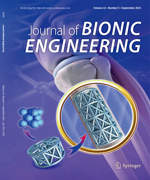This innovative work presents mechanical, physical and chemical characterization and analysis of newly extracted fiber from natu-rally resourced plant stem, named Spinifex littoreus fibers (SLF). This is a novel natural, biodegradable and sustainable reinforcement for an improved composite. Initially, the chemical constituents of SLF, such as cellulose, lignin, moisture and wax content were studied. The raw SLF surfaces were modified by chemical treatment with sodium hydroxide (NaOH), calcium hydroxide (Ca(OH)2) and silane. A polyester matrix was reinforced with all the treated SLF, before the mechanical properties (tensile strengths) of the composites were determined. Among all the surface chemically treated SLF/polyester composite samples, the Ca(OH)2 treated sample exhibited the highest tensile strength. Further microscopic examination was carried out to validate this result. Also, this analysis established the mechanism of failure of the tensile fractured composite samples, using Scanning Electron Microscope (SEM), among other techniques.

 Table of Content
Table of Content
 Table of Content
Table of Content